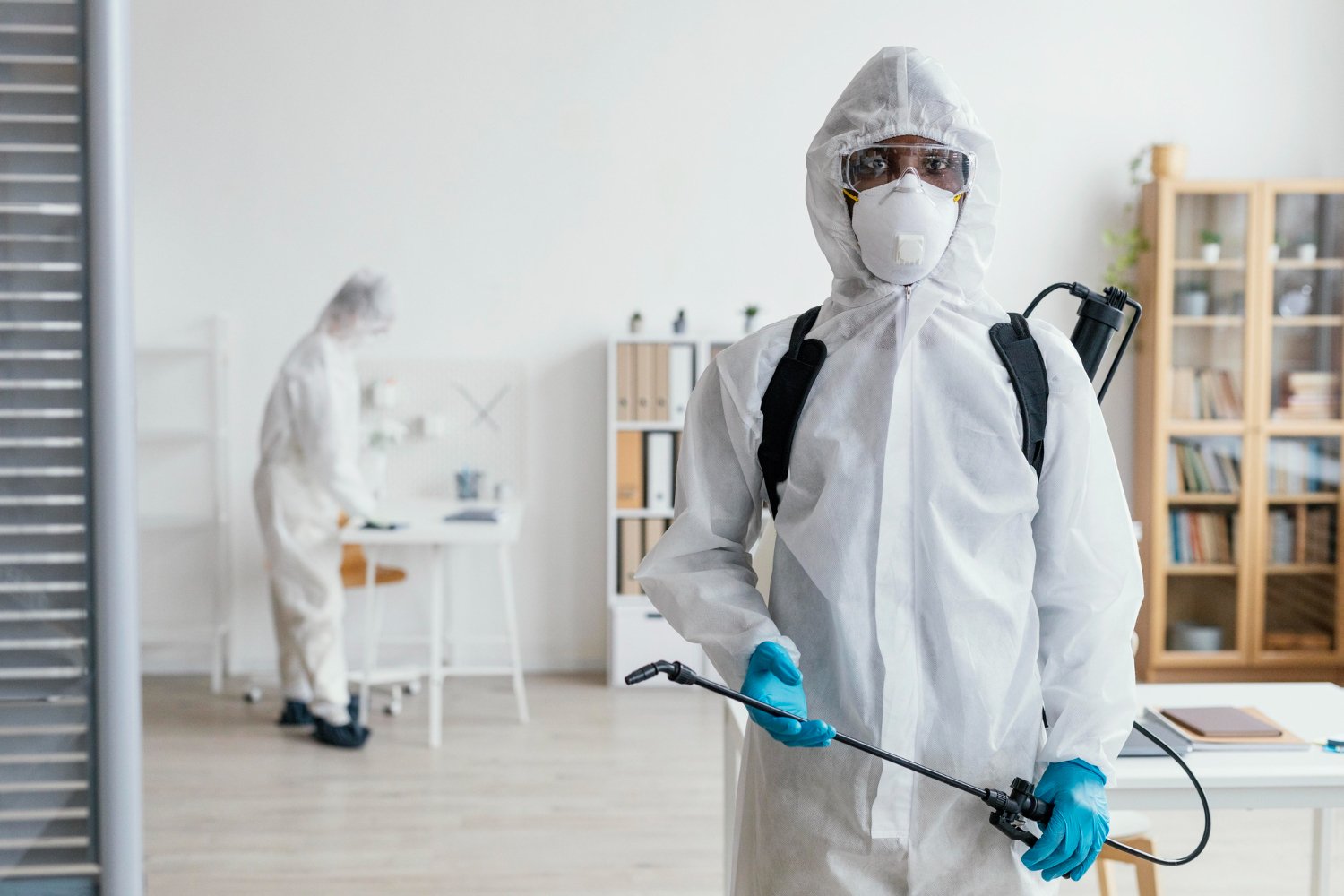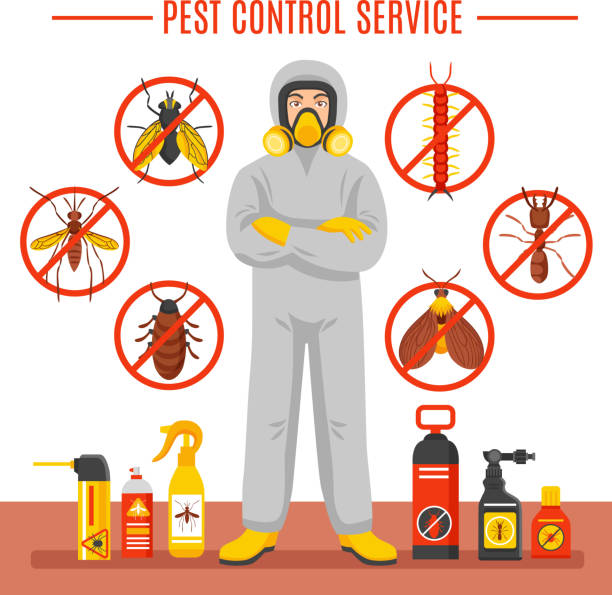Family-Safe and Efficient Treatments by Pest Control Lockhart
Family-Safe and Efficient Treatments by Pest Control Lockhart
Blog Article
Exploring Problem and Treatment Approaches on the planet of Insect Control
The landscape of pest control incorporates a myriad of challenges, specifically as invasions of usual family pests proceed to develop. Recognizing the habits and reproductive patterns of these hassles is vital for developing reliable treatment methods. By integrating precautionary measures with sophisticated management methods, such as Integrated Parasite Administration (IPM), home owners can better secure their environments. Nevertheless, the performance of these methods might differ considerably based on certain conditions. What underlying variables add to the success or failure of these methods in various setups?

Usual Family Vermin
When it comes to handling our living areas, understanding typical household pests is vital. These parasites not just interrupt our comfort yet can also position health threats and damages building. The most prevalent family parasites include ants, cockroaches, rodents, termites, and bed bugs.
Ants, typically seen foraging in kitchen areas, can infect food and develop big nests. Cockroaches, known for their resilience, can trigger allergic reactions and spread virus. Rats, consisting of mice and rats, can cause architectural damages and bring illness like hantavirus and salmonella. Termites, typically referred to as "quiet destroyers," can endanger the stability of wooden structures, bring about expensive repair work. Bed bugs, although not condition service providers, can trigger significant pain with their bites and lead to emotional distress.
Acknowledging the signs of these bugs, such as droppings, nests, or bite marks, is essential for very early intervention (Pest Control Lockhart). Correct cleanliness techniques, sealing access points, and keeping a clutter-free atmosphere work preventative procedures. By identifying these usual home parasites and comprehending their actions, property owners can take aggressive steps to minimize invasions, making certain a healthier living setting
Understanding Bug Infestations
Pest invasions can rise rapidly, transforming a minor nuisance right into a significant issue otherwise addressed immediately. Recognizing the nature of these infestations is vital for effective management. Bugs can attack domestic and commercial spaces for different factors, consisting of the look for food, shelter, or reproducing premises. Typical aspects contributing to problems include poor hygiene, architectural susceptabilities, and seasonal adjustments that drive parasites inside your home.
Identifying the sort of pest is important, as different species exhibit varied behaviors and reproductive prices. For example, rats might develop nests in concealed areas while insects like cockroaches thrive in wet settings. Early detection often rests on identifying indications such as droppings, nibble marks, or unusual audios, which can show a trouble prior to it ends up being severe.
Ecological problems also play a vital duty in bug proliferation. Cozy, damp climates can facilitate the quick growth of pest populaces, while changes in landscape design or building and construction can unintentionally create helpful atmospheres. Regular assessments and preventative steps are extremely important to alleviating the risk of invasions. An informed technique to understanding these characteristics prepares for efficient pest administration approaches in the future.
Therapy Approaches and Techniques
Efficient therapy approaches and techniques are vital for minimizing pest invasions and recovering a secure environment. A multifaceted technique is usually best, incorporating chemical, biological, and mechanical techniques customized to the details Click Here parasite and the severity of the infestation.
Chemical treatments include the use of pesticides and herbicides, which can successfully remove parasites. However, proper application and adherence to safety guidelines are crucial to reduce dangers to people and non-target organisms. Integrated Pest Management (IPM) encourages the judicious use chemicals as a last hope, counting rather on tracking and threshold levels to determine treatment demands.
Biological control methods entail introducing natural killers or parasites to reduce bug populations. This strategy is progressively popular, specifically in agricultural settings, as it advertises environmental sustainability.
Mechanical approaches, such as traps and obstacles, offer immediate alleviation from pests without presenting chemicals. Options consist of sticky traps for bugs or physical barriers for rats.
Ultimately, the option of treatment technique should take into consideration the specific parasite, the environment, and possible effect on human health and wellness and communities. A well balanced combination of these methods can effectively handle problems while promoting lasting pest control options.
Safety Nets for Residence
Proactively addressing bug concerns before they intensify is essential for maintaining a healthy home atmosphere (Pest Control Lockhart). Applying effective precautionary actions can considerably minimize the chance of infestations, ultimately securing both your property and well-being

Appropriate landscaping likewise plays a vital duty in avoidance. Maintaining bushes and trees trimmed away from your description home decreases the chances of insects finding their way indoors. Furthermore, make certain that water drainage systems are operating effectively to avoid standing water, which can reel in mosquitoes and other pests.
Last but not least, routine evaluations are advisable. Regularly looking for indications of insect task permits early intervention. By taking on these safety nets, home owners can produce an environment that is much less welcoming to pests, therefore improving their overall top quality of life and decreasing the demand for substantial pest control treatments.
Commercial Parasite Control Techniques
A comprehensive technique to commercial bug control is important for organizations aiming to keep a safe and sanitary environment. Efficient strategies include a mix of regular examinations, employee training, and the application of Integrated Pest Administration (IPM) techniques.
Regular assessments enable early discovery of parasite activity, enabling for prompt intervention. Services should establish a regular timetable for these assessments, concentrating on risky locations such as kitchens, storage spaces, and garbage disposal websites. Employee training is equally vital; team should be educated on the indications of bug problems and the importance of reporting them right away.
Carrying out IPM techniques helps mitigate insect problems sustainably. This includes habitat adjustment, such as securing access top article factors and lowering mess, along with employing natural deterrents prior to resorting to chemical treatments.

Moreover, collaborating with a certified insect control company makes sure accessibility to professional understanding and sophisticated treatment options. This partnership can lead to tailored parasite control intends customized to the certain requirements of the company, reducing risks and enhancing total efficiency. Inevitably, a positive and informed approach cultivates a pest-free setting, securing both public health and wellness and company reputation.
Verdict
In final thought, reliable pest control demands a comprehensive understanding of typical household bugs and their behaviors, coupled with targeted treatment techniques. Applying preventative procedures alongside therapy approaches such as Integrated Bug Monitoring and biological control enhances the ability to alleviate infestations.
Report this page